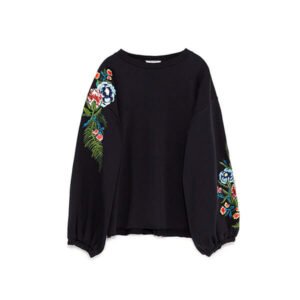In today’s fast-paced world, visual communication has become more important than ever. From advertising and branding to information dissemination and entertainment, the way we convey messages visually can make a significant impact on how they are received and remembered. One technology that is at the forefront of this revolution is LED displays. In this article, we’ll explore how LED displays are transforming the landscape of visual communication and revolutionizing the way we engage with information and entertainment.
Dynamic Content Delivery LED displays offer unparalleled flexibility when it comes to displaying dynamic content. Unlike traditional static signs or posters, LED displays can showcase dynamic visuals, animations, and videos that capture attention and engage viewers. This dynamic content delivery capability allows advertisers, marketers, and content creators to convey their messages in more compelling and memorable ways.
High Visibility One of the key advantages of LED displays is their high brightness and visibility, even in broad daylight. This makes them ideal for outdoor advertising, where visibility is crucial for capturing the attention of passersby and commuters. LED displays can cut through the visual clutter of urban environments and deliver messages with clarity and impact.
Versatility in Size and Shape LED displays come in a variety of sizes and shapes, ranging from small digital signs to large-scale video walls. This versatility allows for creative freedom in designing visual communication solutions for different spaces and applications. Whether it’s a single-screen display in a retail store or a multi-panel video wall in a corporate lobby, LED displays can be customized to fit any space and achieve any desired effect.
Interactive Capabilities With the advent of touchscreen technology and interactive software applications, LED displays are becoming increasingly interactive. Users can now engage with content directly, interacting with touchscreen displays to access information, make selections, and participate in immersive experiences. This interactivity adds a new dimension to visual communication, enabling deeper engagement and fostering memorable interactions.
Real-time Content Updates LED displays can be connected to digital content management systems, allowing for real-time content updates and remote management. This means that advertisers and content creators can update their messaging on the fly, responding quickly to changing market conditions, events, or promotions. Real-time content updates ensure that LED displays remain relevant and impactful in today’s fast-changing world.
Energy Efficiency and Sustainability huge led screen displays are known for their energy efficiency and sustainability compared to traditional display technologies. LED technology consumes less power, produces less heat, and lasts longer than conventional lighting sources, making it a more environmentally friendly option for visual communication. This energy efficiency not only reduces operating costs but also contributes to efforts to reduce carbon emissions and conserve resources.
In conclusion, LED displays are revolutionizing visual communication by offering dynamic content delivery, high visibility, versatility in size and shape, interactive capabilities, real-time content updates, and energy efficiency. As technology continues to evolve, LED displays will play an increasingly central role in shaping the way we communicate visually, delivering immersive and impactful experiences that engage and inspire audiences around the world.

 Micro-pitch LED large-screen splicing display system is guided by theories of system engineering, information engineering, and automation control, and integrates the most outstanding international high-definition digital display technology, splicing technology, multi-screen image processing technology, and network technology. Make the whole system a large-screen display system with high brightness, high resolution, high definition, high intelligent control and advanced operation. It can be well connected and integrated with user monitoring system, command and dispatch system, network information system, etc. to form a set of interactive information display and management platform with complete functions and advanced technology.
Micro-pitch LED large-screen splicing display system is guided by theories of system engineering, information engineering, and automation control, and integrates the most outstanding international high-definition digital display technology, splicing technology, multi-screen image processing technology, and network technology. Make the whole system a large-screen display system with high brightness, high resolution, high definition, high intelligent control and advanced operation. It can be well connected and integrated with user monitoring system, command and dispatch system, network information system, etc. to form a set of interactive information display and management platform with complete functions and advanced technology. Times Square in New York City is home to some of the world’s most iconic LED advertising screens, attracting millions of tourists and visitors each year. Brands such as Coca-Cola, Samsung, and Disney have leveraged Times Square’s LED screens to create memorable and impactful marketing campaigns. For
Times Square in New York City is home to some of the world’s most iconic LED advertising screens, attracting millions of tourists and visitors each year. Brands such as Coca-Cola, Samsung, and Disney have leveraged Times Square’s LED screens to create memorable and impactful marketing campaigns. For  The outdoor LED large screen is no longer a simple media display platform for outdoor advertising. It can also broadcast news, information and other video content, forming a new outdoor communication media of public welfare + news + information + advertising. In terms of information, it has a higher value of obtaining information. And these are beyond the reach of traditional outdoor media. Since then, outdoor advertising has galloped in the advertising market as two carriages keeping pace with newspaper advertising, and has become two important forms for advertisers to choose to place outdoor advertising.
The outdoor LED large screen is no longer a simple media display platform for outdoor advertising. It can also broadcast news, information and other video content, forming a new outdoor communication media of public welfare + news + information + advertising. In terms of information, it has a higher value of obtaining information. And these are beyond the reach of traditional outdoor media. Since then, outdoor advertising has galloped in the advertising market as two carriages keeping pace with newspaper advertising, and has become two important forms for advertisers to choose to place outdoor advertising. Future innovations in LED video wall technology are expected to focus on making panels thinner, lighter, and more flexible. By incorporating advancements in materials science and manufacturing techniques, manufacturers will be able to produce LED panels that are thinner and lighter than ever before, making them easier to install, transport, and integrate into a variety of environments. Thinner and lighter panels will also offer greater design flexibility, allowing for creative
Future innovations in LED video wall technology are expected to focus on making panels thinner, lighter, and more flexible. By incorporating advancements in materials science and manufacturing techniques, manufacturers will be able to produce LED panels that are thinner and lighter than ever before, making them easier to install, transport, and integrate into a variety of environments. Thinner and lighter panels will also offer greater design flexibility, allowing for creative 









